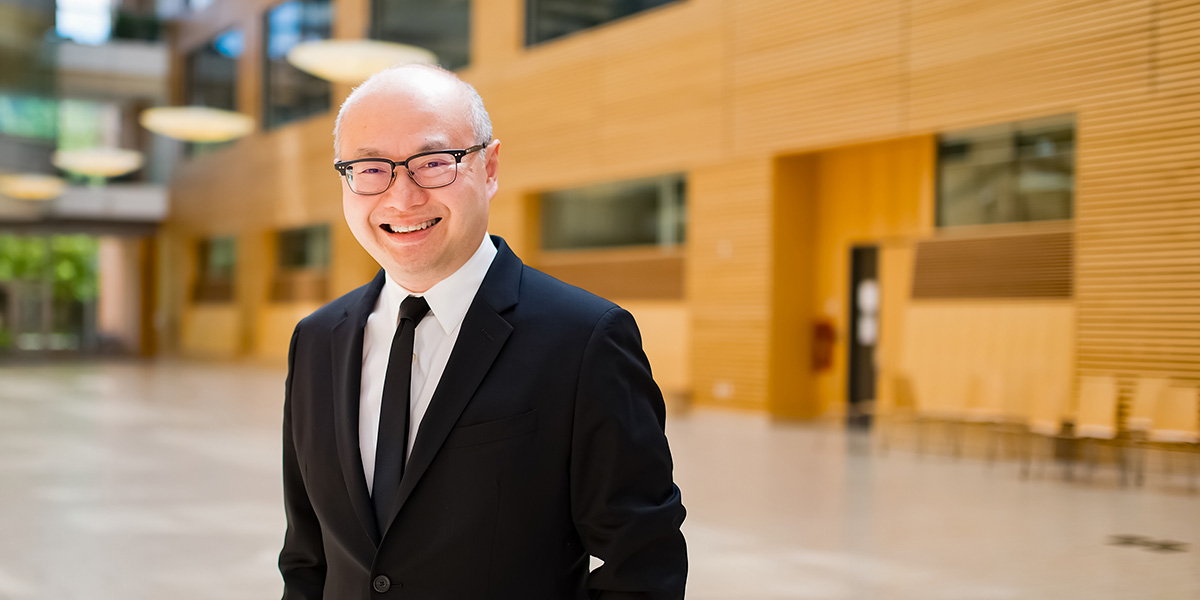Learning in the time of COVID-19
At the start of this week, UBC’s Faculty of Medicine (the Faculty) welcomed hundreds of new and returning students to a variety of programs ranging from medicine, midwifery and public health.
As the evolving COVID-19 pandemic continues, this fall the Faculty is offering an innovative and blended approach to delivering world-class education and training that includes both online and in-person learning where required. The goal is to optimize the student learning experience through the creative use of technology, connectivity and a large scoop of compassion.
Dr. Roger Wong, Vice Dean of Education, is leading the faculty in this transformation.
We met with him to learn more about his experience during the early days of the pandemic and what students can expect this fall.

Dr. Roger Wong, Vice Dean, Education
When the pandemic hit, UBC had to quickly transition to online learning. Tell me what was going through your mind at the time and how it affected students, faculty and staff.
I remember March 13th like it was yesterday. The World Health Organization (WHO) had declared COVID-19 a pandemic two days earlier and my team and I made the difficult decision to temporarily place on hold the students’ clinical learning experiences and transition to online learning. It was a tough decision but it was the right call.
The Faculty’s main priority was — as it continues to be — the safety of our students, staff, faculty, and the patients and communities we serve, while delivering high-quality teaching and learning. I feel immense gratitude for everyone in our community — our clinical faculty, academic faculty, administration teams, students and Health Authority partners for literally working around the clock to ensure that our learners and trainees stay safe while continuing to get the high-quality of education and training they deserve.
This is the first pandemic of this scale that we’ve experienced in the last 100 years and it’s been challenging for everyone. We are all in this together and we will pull through it with courage and compassion — courage to face uncertainty and compassion to care for each other.
COVID-19 has changed so much of our daily lives including how we teach. As Vice Dean of Education, what will the student experience be like this fall?
The pandemic has created extraordinary challenges for our students and I am deeply impressed by their understanding, resilience and creative ability to stay virtually connected with their peers and teachers.
Prior to the pandemic, UBC’s Faculty of Medicine was already well-positioned to transition to online learning, as we had already renewed parts of our curriculum across our programs to utilize technology in a provincially distributed platform and employ innovative ways of teaching outside of traditional lectures.
A critical priority for us this fall is ensuring students continue to have meaningful engagement with their classmates and faculty. We are using every tool available to us — real-time video conferencing, in-person clinical skills training and clinical placements with appropriate public health protective measures, increasing the number of teaching assistants available in online chat rooms and simulation labs like the virtual anatomy lab — to ensure that students feel connected to their faculty and to each other.
Can you tell us more about the Virtual Education Resource Hub and other supports available to faculty members this fall to support the transition to a blended educational delivery model?
UBC has a number of helpful resources for students and faculties across the university, such as the Keep Learning and Keep Teaching websites, but it was important for the Faculty of Medicine to pivot and mobilize all of our existing resources as well to best support the unique continual learning needs of our students. The Virtual Education Resource Hub (VERH) provides additional tools and resources for faculty to design and deliver high-quality medical and health education remotely and online. This will better support them during the transition to the new education model and throughout the semester.
Some of the available supports include best practices in medical IT educational technology, hackspace for innovation and visualization in education, faculty development, health education scholarship, continuing professional development, and Internet based medical library resources.
The pandemic has disrupted traditional education models. What are the positive changes you hope will continue in the future?
We know that any kind of disruption can initially be uncomfortable because it pushes us outside of our comfort zone.
That said, it’s important to recognize that there are also positive changes catalyzed by the pandemic situation — the kinds of innovations we are seeing in medical and health education right now would have taken years, if not decades, to achieve.
The pandemic has shown us how to leverage technology and explore all the different innovative opportunities it can offer in the continuum of medical and health education, such as using flexible and creative virtual learning spaces, virtual clinical simulation with emerging media, and virtual health care to serve the needs of patients and communities.
Although no one knows exactly what the “new normal” will look like after the dust settles, we know it won’t look like it did before the pandemic. I believe this disruptive innovation can potentially lead to increased access in health care, as well as an evolution in terms of how we deliver medical and health education, with technology and compassion, to transform how we learn and teach. And that is a good thing.
Share this Story
Published: August 28, 2020